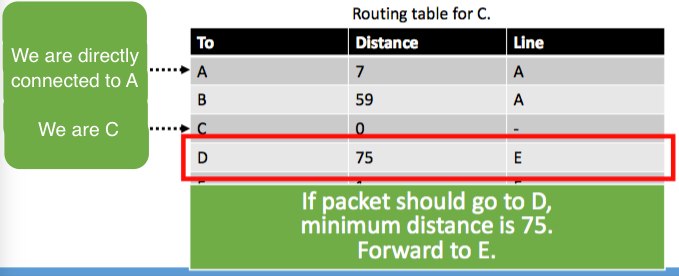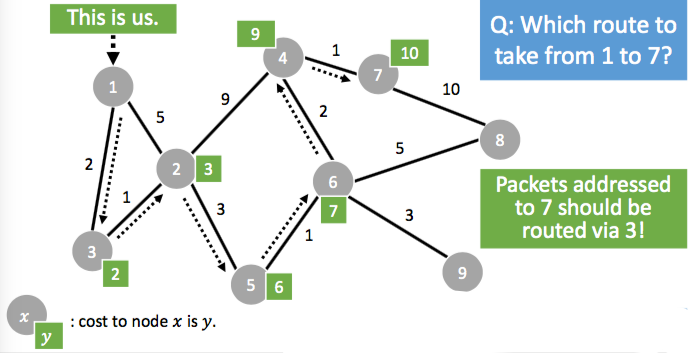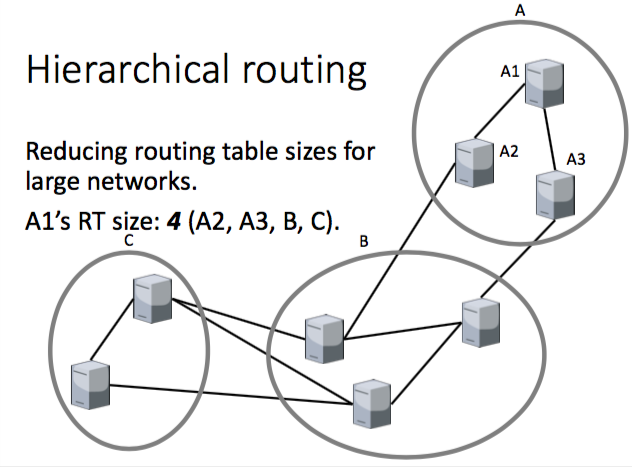Computer Networks
Table of Contents
Network: routing
Routing — from point A to point B Important properties (there is often a trade-off):
- Correctness
- Simplicity
- Robustness
- Stability
- Fairness
- Efficiency
Methods of routing
- Distance vector routing
- send distance vector to neighbours (distance to all nodes)
- use incoming distance vectors to build a routing table:

- however, when a machine fails, it leads to a count to infinity problem
- Link state routing
- routers only send packets with info about direct neighbours
- these packets are flooded (sent to everyone)
- routers build overview of network using those packets, with a shortest path algorithm (Dijkstra)

- no count to infinity problem, but more complicated
- Hierarchical routing
- route to groups of nodes instead of individual nodes
- good for large networks
